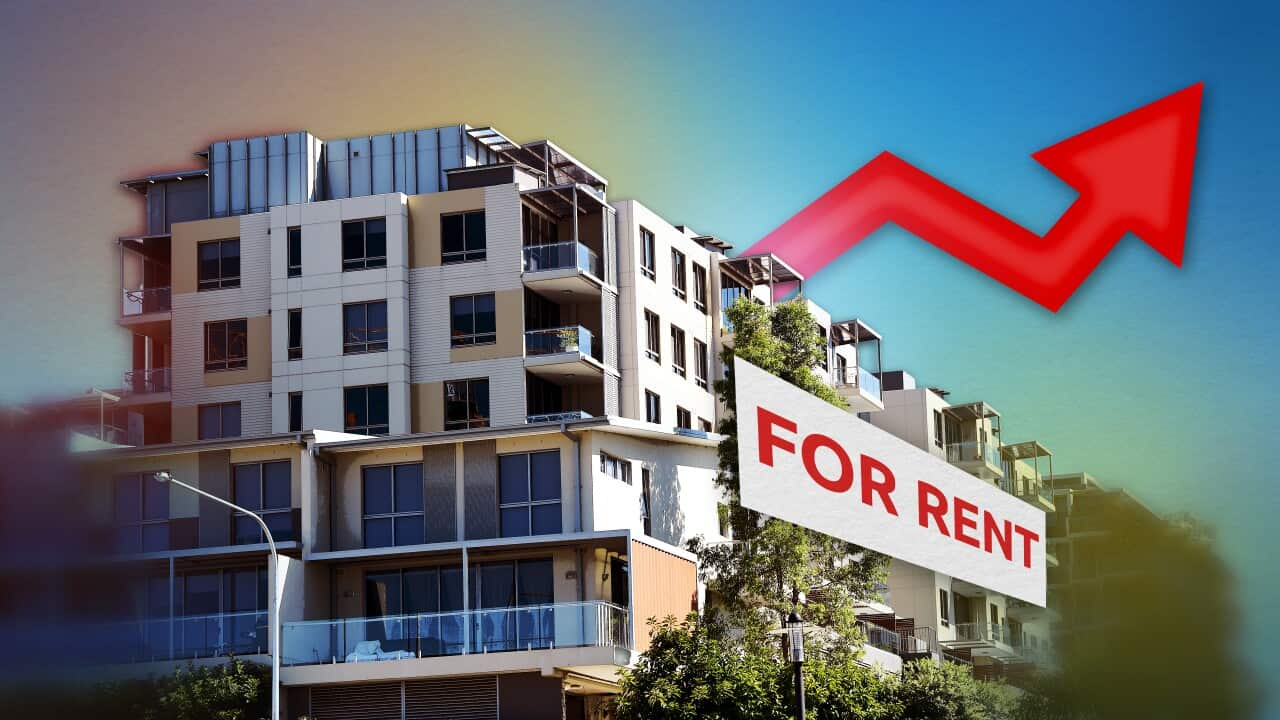Australian rental prices continue to rise, with the cost of smaller homes surging as people increasingly find themselves unable to afford houses.
National unit rents grew 13.5 per cent year-on-year in the March quarter, outpacing houses which increased by 9.1 per cent, according to property research firm PropTrack’s latest market report.
It also found rental price growth across all dwelling types was up 3.4 per cent on the previous quarter — one of the steepest hikes on record behind the first quarter increase in 2023.
The national rent price median for all dwelling types was $600 a week, PropTrack said
How much have unit rents increased?
Nationally, the median rent for units in the March quarter came in at $590 a week, according to PropTrack.
The biggest annual increase was in Perth, while Sydney remains Australia’s most expensive city to rent.
The median cost for a unit in Perth was $590 a week after an increase of 19.2 per cent, while Sydney prices increased by 12.9 per cent to $700 a week.
Brisbane unit prices increased by 16 per cent to a median of $580 a week, while in Melbourne the price went up by 14.6 per cent to $550 a week.
The median rental price of an Adelaide unit was $480 a week after an 11.6 per cent increase.
In Darwin, the median rose 1.8 per cent, and in the ACT, 1.8 per cent, taking the median cost to $550 and $570 per week respectively.
Only in Hobart did the median weekly rent for units fall — by 2.1 per cent to $470 a week.
According to the latest PropTrack data, Perth had the biggest increase in unit rental prices, while Sydney remains the most expensive. Source: SBS News
How much have house rents increased?
Nationally, the cost of renting a house increased at a slightly more moderate pace annually — up by 9.1 per cent over the same period to a median of $600 a week.
Weekly house rents in Sydney jumped almost 10.3 per cent to $750 a week, and it remains the most expensive city to rent a house.
It was followed by the ACT, where the median was $700 a week after a 1.45 per cent increase; Darwin at $680 a week (up 4.62 per cent); Brisbane at $640 a week (up 10.34 per cent); Adelaide at $590 (up 12.38 per cent); and Melbourne at $575 a week (up 15 per cent).
Hobart was the least expensive capital city, with the median price remaining steady over the year at $560 a week.
And the biggest increase was in Perth, with the median weekly price up 16 per cent to $650.
Paul Ryan, a senior economist at PropTrack, said the growth in unit rentals could be due to several factors.
“The first being that all of the locations units are in have resumed their appeal since the pandemic, with hospitality opening up and offices back and face-to-face university and things like that,” he said.
“And the second factor I think that is putting a lot of pressure on unit rents at the moment is the affordability of rentals … given how much rents have increased over the past couple of years.
“So people are searching for whatever they can afford, even if that is a smaller unit.”
Will rental price growth ease?
There are some signs of a market slowdown.
Advertised rents were up 9.1 per cent over the past year — the lowest annual increase since December 2021, Ryan said.
“The conditions in the rental market are still really challenging for renters; rental availability is at really low levels, close to 1 per cent across most regions for rental vacancy rates,” he said.
“But rental growth is slowing and that is a positive; hopefully we see that trend continue throughout the rest of 2024.”
A study by economic forecaster Oxford Economics Australia’s, published this week, found rental price growth was expected to cool in the three years to 2027.
It said the slowdown would likely be caused by dwindling capacity among renters to absorb higher costs, and .
“Stress on household budgets has reached a level that will significantly limit the capacity for further rental gains while the return of interest rate cuts from late 2024 will ease leveraged property outgoings,” said Maree Kilroy, an Oxford economics senior economist and author of the report.
Kilroy also expected vacancy rates to lift “slightly”, and said overseas migration “looks to have peaked”.

